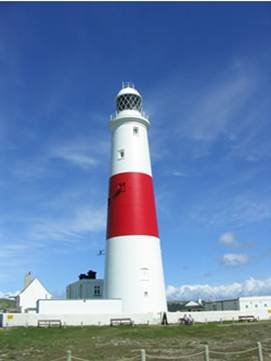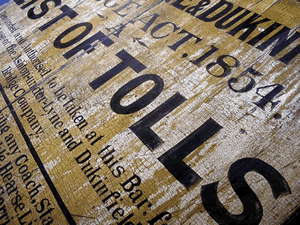Public goods
What are public goods?
 Pure public goods are ones that when consumed by one person can be consumed in equal amounts by the remainder of society, and where the possibility of excluding others from consumption is impossible.
Pure public goods are ones that when consumed by one person can be consumed in equal amounts by the remainder of society, and where the possibility of excluding others from consumption is impossible.
Examples of public goods are:
- national defence;
- the police service;
- street lighting;
- lighthouses;
- flood-control dams;
- pavements;
- public drainage.
It is likely that the market, left to itself, will seriously under-produce such goods, or possibly not produce them at all. This is because the market will only provide goods for which a profit can be made, and pure public goods possess two important properties that together make their production on the basis of private profitability extremely difficult. These features are:
- non-rivalry (or non-diminishability);
- non-excludabilty.
Firstly, consider the characteristic of non-rivalry: this means that one person's use of the public good does not deprive any other person of such use or does not diminish the amount available to others; for example, if one person enjoys the benefits of being protected by the police-force, a flood control dam or the national defence system, it does not prevent everyone else doing the same; similarly, if one person benefits from walking along a street at night-time which is paved, free of pot-holes, and well-lit, the benefits and the availability to others would not be diminished.
Secondly, consider the characteristic of non-excludability: this means that when the public good is provided to one person, it is not possible to prevent others from enjoying its consumption - sometimes summarised as: provision at all means provision for all. For example, if a police force, a flood-control dam or a national defence system is successful in offering protection to citizens of a country, once it has been provided it is impossible to exclude anyone within the country from consuming and benefiting from them. Similarly, for a paved and well-lit public street, nobody can be prevented from enjoying its benefits.
The concept of a 'public good' can perhaps best be understood by comparing it with its opposite, a private good.
A private good possesses two features, excludability and rivalry, and when consumed by one person, it is not available to others; thus, a person buying a new washing machine can exercise private property rights over it and exclude others from enjoying its cleaning abilities, whilst, at the same time, diminishing the total stock of washing machines available for sale to others.
Thus, in the case of public goods,the market fails because the private sector would be unwilling to supply them - their non-excludabilty makes them non-marketable, because non-payers cannot be prevented from enjoying the benefits of consumption, and therefore prices cannot be attributed to particular consumers. This involves the free-rider problem, which arises when it is impossible to provide a good or service to some without it automatically and freely being available to others who do not contribute to its cost. For example, imagine a situation in which you shared an island with five other inhabitants; if you paid privately for an army to defend the island against violent invaders, your five co-inhabitants could 'free-ride' off you by enjoying the benefits of the defence, without having to pay anything towards it; there would probably come a point when you would withdraw your payments and, like the others, leave it to someone else to foot the bill; eventually, the army would not be provided at all.

Free riders
Free riders are those who enjoy the benefits of a public good without having to pay, because it is impossible to exclude them.
Hence, in a free market, a whole range of pure public goods may not be provided, and the only answer is for the state to provide them, financed out of general taxation. Moreover, the non-rivalry aspect of public goods means that the cost of supplying one more user i.e. the marginal cost, is zero; for example, once paving stones have been laid, it makes no difference how many people walk along them as there is no additional cost involved. As the condition for the achievement of allocative efficiency is that price should be set equal to marginal cost, it would therefore follow that to achieve an optimum level of output and consumption of public goods the state should provide them at zero prices.
Non-pure public goods (quasi-public goods)
 In practice, various ways may be devised for excluding free riders from the consumption of public goods, as the characteristics of non-excludabilty and non-rivalry may not be completely present. In such cases, the goods would be referred to as non-pure or quasi-public goods; for example, in the case of a motorway, various methods could be used, such as electronic tagging or toll-gates, to make users pay (an impossibility with a pure public good), so excludabilty would be possible; and, if the motorway were to become sufficiently congested, non-rivalry would not be present i.e. as the road reaches its full vehicle capacity, as often happens in the rush-hour periods on urban motorways, each extra road user does reduce the availability of the motorway to other motorists and raises the marginal supply cost above zero. (The marginal cost would of course be zero, or near to zero, on an entirely uncongested motorway.)
In practice, various ways may be devised for excluding free riders from the consumption of public goods, as the characteristics of non-excludabilty and non-rivalry may not be completely present. In such cases, the goods would be referred to as non-pure or quasi-public goods; for example, in the case of a motorway, various methods could be used, such as electronic tagging or toll-gates, to make users pay (an impossibility with a pure public good), so excludabilty would be possible; and, if the motorway were to become sufficiently congested, non-rivalry would not be present i.e. as the road reaches its full vehicle capacity, as often happens in the rush-hour periods on urban motorways, each extra road user does reduce the availability of the motorway to other motorists and raises the marginal supply cost above zero. (The marginal cost would of course be zero, or near to zero, on an entirely uncongested motorway.)
Thus a non-pure public good is an example of a mixed good, which is one which has both a public and a private good content. A motorway provides an example of a public good with a private good component, and conversely it is possible to identify private goods, with a public good component e.g. driving a car is an act of private consumption, but when public transport is not available, perhaps because transport workers are on strike, car owners may offer lifts to stranded travellers creating some publicness. Hence, in practice, many public and private goods contain some mix of both.
